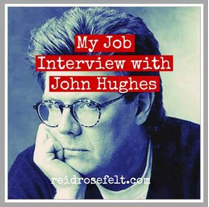By Reid Rosefelt
Today many marketers are making twice as much money on Pinterest as they are on Facebook. Does that mean that for you–my filmmaker and artist readers–Pinterest is worth twice as much of your precious time? Yes, and there’s a simple reason.
All the big social networks like Facebook, Twitter, Tumblr, and Instagram have struggled to translate their large numbers into revenue. Eventually, the costs to simply keep in operation get so astronomical that they throw up their hands in despair–and the only answer they can come up with is advertising.
On the other hand, the ability to market and promote is built into Pinterest’s DNA. Pinterest is a colossally effective store that is as fun and addictive as “Angry Birds.” Like that thing you’re looking at? Click. Buy. It’s Google search on steroids.
On Facebook you battle every day for people’s engagement. On Twitter you fight through each minute for people’s fleeting attention. On Pinterest you build. Depending on who you are, I believe it’s a more productive use of your time to begin constructing something that will be of real value in the future than working frantically on something you have no clue how it’s helping you today. Let me ask a question: Do you know exactly how you’re tweeting and posting is helping you reach your objectives? If the answer is no, I say get building on PInterest and Google+. If the answer is yes, then you are the kind of influencer who can get a huge head start on another network. It’s an opportunity you shouldn’t miss.
I say get building. What do get when you build a Pinterest page?
You build a home. A home for links to all the external content you want to send people to: your website, email sign-up sheet, YouTube or Vimeo channels, even other social media. Much more usefully, you can also direct them to more specific things, like a single blog post or video.
I’ve made a graphic that links to a John Hughes post I wrote years ago for my “My Life as a Blog” website, which got a lot of interest at the time. This old post would be as forgotten as yesterday’s papers if not for Pinterest and other social media. As it gets passed around to other Pinterest boards like “John Hughes” or “80’s Film Directors,” my writing will be discovered by people who may repin it and possibly even share it on Facebook or Twitter. If they like one memoir, they might like another one in the “My Life as a Movie Publicist” board.
Also note that the John Hughes graphic has “reidrosefelt.com” on it. Wherever any of my original content goes, it will always be linked to my site. This is one way to direct people from your Pinterest page to your external content. Here are three others:
1) Link on your page description. The website you give in your profile becomes a displayed link in your profile.

2) In your description of a specific picture. If you put a web address into your description, it’s also a link.

Pinterest is wary of hyperlinks, because they don’t want spam, so it’s possible that this functionality may end someday. I leave it to you whether or not you want to take advantage of this particular feature. But certainly don’t put a shortened URL, such as a bit.ly, put the actual URL for your site and you should be okay.
3) Include Hyperlinks in your graphics.
When you When you upload an image on Pinterest, by default it will not include a hyperlink. But you can add links, which will take readers to your site.
Here’s how to do it:
Hover over your image and you’ll see the Edit button.

Click on it for this screen and type the URL into the “Source” blank.

It’s best to give a clear description of what the user will see when they click, because there are unfortunately a lot of Pinterest links that take users to not very nice places, possibly even into malware. Pinterest is working on this, but it will always be a good idea to build a trusting relationship with your readers by telling them what they’ll get when they link.
I showed you in previous posts why every filmmaker and artist needs to have a Pinterest board, and how a popular Pinterest board can get you listed #1 on a Google search, but that still leaves the question of how you can make your own Pinterest page into a success.
The answer to this question is the same one as for all social media sites: Create (and find) interesting content.
For our purposes Pinterest is a search engine for what its members like the most. Therefore, the key to winning Pinterest’s heart is in that little rectangle box in the top left of the page with the magnifying glass with the word “search” in it.
It would seem logical that if you put together a board that was unique or at least of higher quality than similar boards, you’d eventually be discovered in Pinterest. Make a lot of them and you build a popular page.
Unfortunately there’s a hitch, and it’s a big one: Pinterest has a screwy search engine that doesn’t follow the hard-and-fast rules about searches and tagging.
I’ll get into the weird glitches in Pinterest search and offer suggestions on how to overcome them in my next blog post.
 Reid Rosefelt coaches filmmakers in how to market their films using Facebook, and lectures frequently on the topic. His credits as a film publicist include “Stranger Than Paradise,” “Crouching Tiger, Hidden Dragon,” and “Precious.”
Reid Rosefelt coaches filmmakers in how to market their films using Facebook, and lectures frequently on the topic. His credits as a film publicist include “Stranger Than Paradise,” “Crouching Tiger, Hidden Dragon,” and “Precious.”
Blog: reidrosefelt.com






